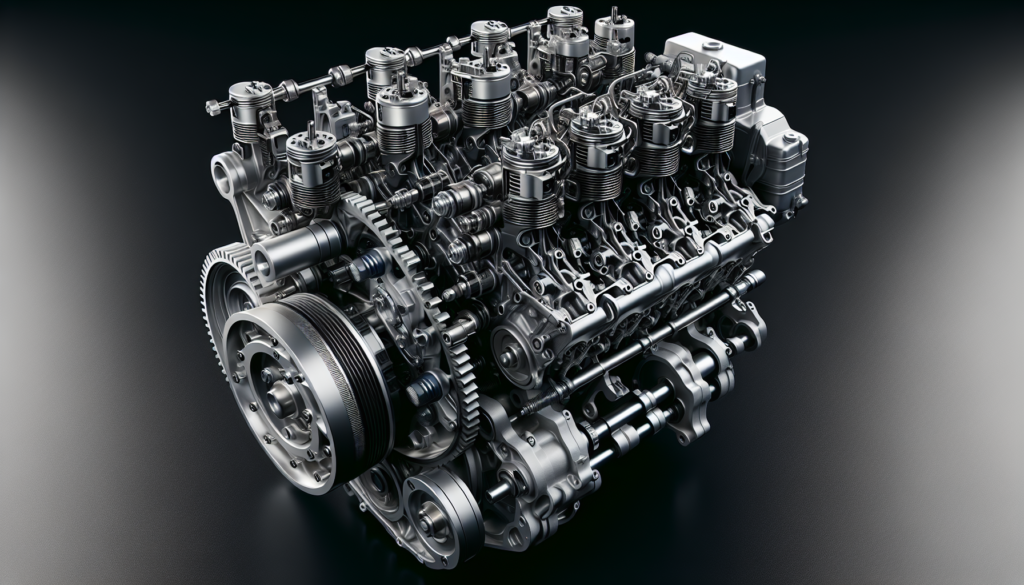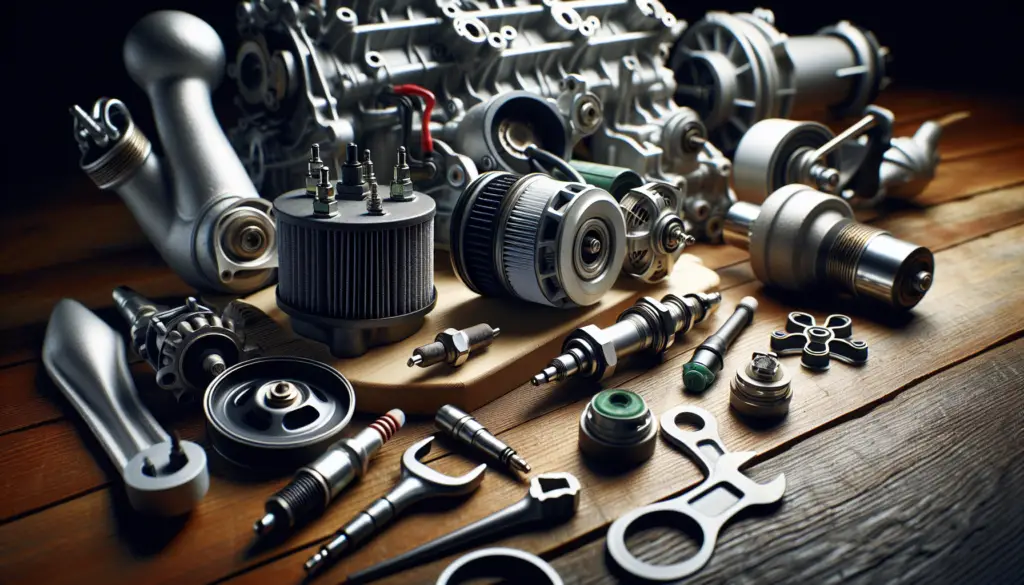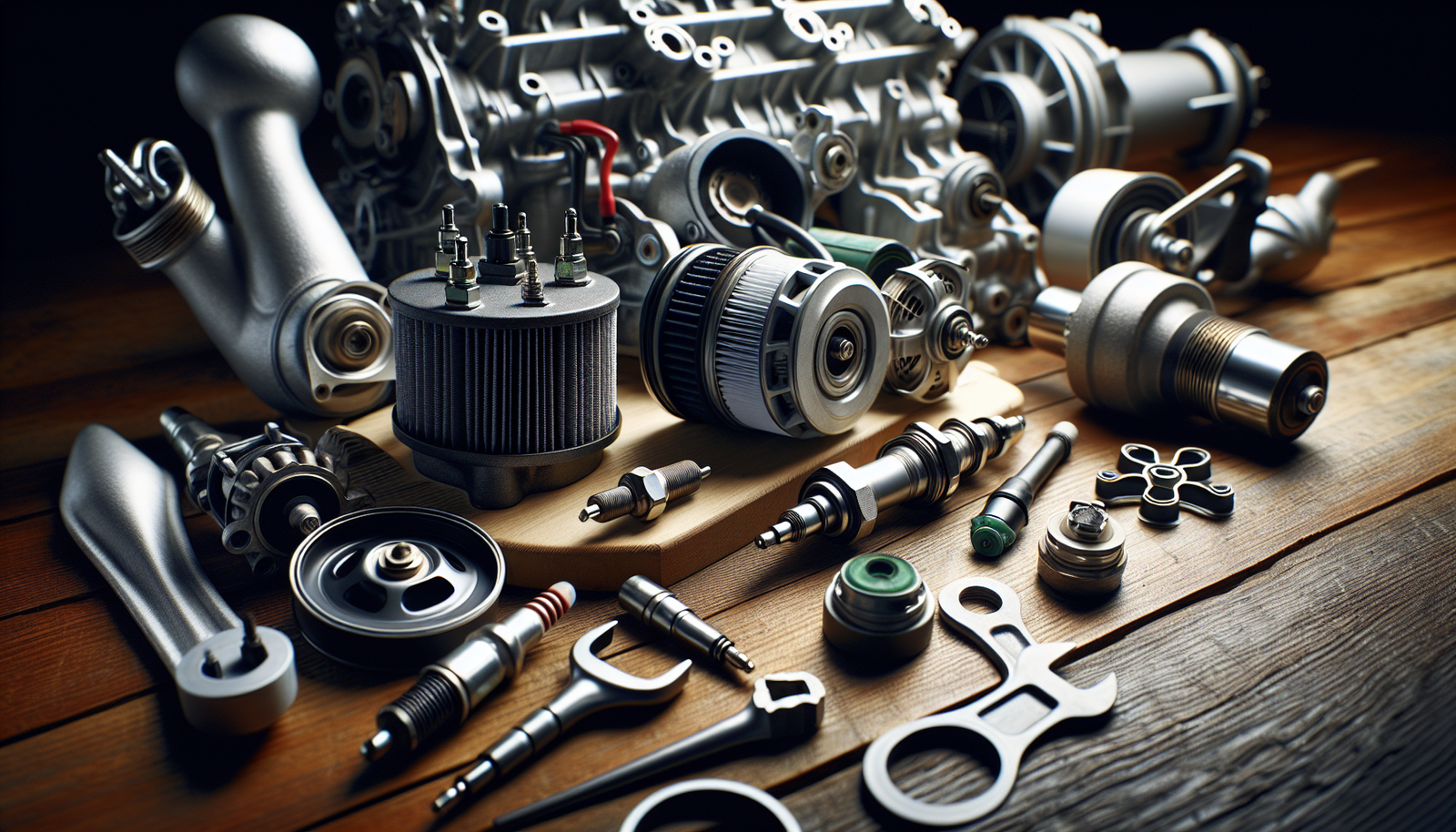Navigating the calmest waters or weathering the toughest storms, your boat operates as smoothly as its engine does. At the heart of this engine are intricate parts and components, intricate but not invincible, and hence deserve your regular attention. “The Top 10 Boat Engine Parts And Components You Should Regularly Inspect” serves as your guide to these crucial pieces, helping you maintain the ship-shape condition of your maritime companion.
Understanding the Importance of Regular Boat Engine Inspection
Boating is a delightful hobby but requires particular attention to maintain your boat’s longevity and safety. And an integral part of this maintenance includes regular boat engine inspection. Whether you own a small fishing boat, a luxury yacht, or something in between, engine inspection is essential to keeping your vessel seaworthy.
Recognizing the need for throttle maintenance
The throttle plays a crucial role in your boat’s engine. It controls the speed of your vessel, allowing you to navigate waterways safely. Proper maintenance on this component can improve fuel efficiency, enhance performance, and avoid potential failure when you’re out at sea. Ignoring throttle maintenance may lead to serious engine damage, resulting in costly repairs or even engine replacement, which you’d undoubtedly prefer to avoid.
The impact of regular inspection on a boat’s lifespan
Like all mechanical assets, boats enjoy extended longevity with consistent care. Regular inspections allow you to detect and address any potential issues at their early stage. Besides, they contribute to increased performance, reduced maintenance costs, and improved boat’s value. Simply put, a routinely inspected boat lives longer. So, don’t ignore those oil changes, filter replacements and other regular check-ups.
Ensuring safety through proper engine maintenance
Safety is paramount when it comes to boating. Engine failures can leave you stranded in the middle of nowhere or even worse, capsized in rough waters. Through regular engine maintenance, you ensure the boat’s stability and safe operation, mitigating risks and ensuring peace of mind for you and your passengers.
Identifying Key Parts of the Boat Engine
Understanding the key parts of your boat engine is also vital. It equips you with knowledge of your onboard power plant, enabling you to carry out DIY inspections and identify issues early.
Differentiating between various engine types
Boat engines come in various types like four-stroke, two-stroke, gas or diesel, inboard, outboard, and inboard/outboard. Each type operates differently and thus requires different inspection procedures. Fully understanding your specific engine type is the first step in maintaining it.
Getting to know your boat’s engine model and components
Each model has its unique components and systems. Make sure to familiarize yourself with your specific engine model, its components, their functions, and maintenance requirements. This familiarity can aid in troubleshooting and also make it easier for you to communicate effectively with professionals when you need to seek assistance.
Examining the engine’s location in the boat
Knowing your engine’s location in the boat is vital – different types of engines are positioned differently. For instance, outboard engines are mounted on the exterior of the boat, whereas inboard engines are situated inside the hull of the boat. The engine’s location influences inspection procedures and costs significantly.

Inspecting the Fuel System
The fuel system is another key component of your boat’s engine. It’s critical for the engine’s functionality and requires diligent inspection.
Checking the fuel filters
Fuel filters act as the frontline defense against dirt and debris, ensuring they don’t end up in your engine. Checking fuel filters regularly allows you to identify blocked or worn-out filters that might affect the engine’s performance.
Examining the fuel lines for leaks
Fuel leaks can pose significant safety risks and cause engine damage. Regular examination of the fuel lines can help you spot and repair leaks promptly.
Considering the age and condition of fuel tanks
Old or poorly maintained fuel tanks are more likely to contain contaminated fuel, which can damage your engine. Besides, they may corrode and develop leaks. Keeping an eye on your fuel tanks’ age and condition can help prevent these issues.
Testing the Cooling System
Your boat’s cooling system prevents the engine from overheating. Regular tests can save you from expensive repairs or replacements.
Regular inspection of the raw water pump
The raw water pump plays a critical role in the cooling system. Regular inspections can help you detect and rectify any issues before they harm the engine.
Looking for signs of corrosion in the heat exchanger
The heat exchanger removes excess heat from the engine. Corrosion inside it can reduce its efficiency, leading to engine overheating. Therefore, always be on the lookout for signs of corrosion.
Ensuring the functionality of the thermostat
A malfunctioning thermostat won’t regulate the engine temperature correctly, potentially causing extensive engine damage. Regularly ensuring its functionality can save you from such troubles.

Maintenance of Exhaust System
The exhaust system’s primary function is to exit the by-products of combustion out of your boat’s engine.
Examining the engine exhaust manifolds
An exhaust manifold in poor condition is likely to leak which causes the engine to lose power. A regular check-up will help identify any leaks or cracks.
Inspecting for possible leaks
Leaks in the exhaust system can cause harmful gases to accumulate in the engine space, posing serious health risks. Regular inspections help mitigate this risk.
Verifying the condition of exhaust lines
Badly maintained exhaust lines can lead to exhaust back-pressure, hampering the engine’s performance. Carry out regular checks to avoid this.
Evaluating the Condition of the Electrical System
The electrical system supplies power to your boat’s engine and other onboard devices.
Assessment of the boat’s ignition system
The ignition system kick-starts the engine. A faulty ignition system will lead to starting problems or even engine breakdown. Regularly assessing its condition can save you from such situations.
Checking the condition of batteries
Batteries are the power source for your boat’s electrical system. Regular checks will help detect any potential issues like low charge levels or corrosion.
Verifying the working status of the boat’s alternator
The alternator charges your boat’s batteries. If it’s not working properly, your batteries can drain, leaving you stranded at sea. Regular checks can prevent such scenarios.

Lubrication System Check-up
The lubrication system is one of the most important parts of your boat engine. Regular check-ups ensure smooth sailing and extend engine life.
Regular change of engine oil
Just like cars, boat engines also need regular oil changes. Fresh oil helps the engine run smoothly and increases its lifespan.
Ensuring the functionality of oil filters
Oil filters sift dirt and debris from the oil, meaning regular checks and replacements are necessary.
Engine transmission oil inspection
The transmission plays a central role in your boat’s speed regulation. Inspecting its oil ensures it operates efficiently and can hint at potential issues.
Checking the Propulsion System
The propulsion system transforms engine power into motion, driving your boat forward or backward.
Inspection of propeller’s condition
Damaged propellers can reduce the boat’s speed or drain the engine’s power. Regular inspections can detect any potential issues early.
Verifying the status of the drive shaft
The drive shaft transfers engine power to the propellers. Checking its status ensures the efficient transformation of power.
Examination of the boat’s gearbox
The gearbox regulates the speed supplied to the propellers. Regular checks ensure it functions correctly for smooth sailing.
Steering System Assessment
A well-functioning steering system lets you navigate your boat with precision.
Regular inspection of the steering cables
Steering cables are crucial for direction control. Regular inspections ensure they haven’t become loose or worn out.
Checking the hydraulic fluid
The hydraulic fluid aids in steering by transferring pressure. Checking its levels frequently will help you spot potential leaks.
Verifying the steering gear box
The gearbox is pivotal to the steering system. Regular checks ensure it operates without problems, allowing for smooth turns and rotations.
Conclusion: Setting a Regular Inspection Schedule
Regular maintenance ensures your boat’s engine stays in top form and you enjoy hassle-free sailing.
Determining the frequency of boat engine inspections
Depending on your boat usage, you might need weekly, monthly, or annual inspections. More frequent usage means more regular inspections.
Understanding the importance of regular maintenance
Regular maintenance keeps your boat in excellent condition, increases its lifespan, and ensures your safety while sailing. It also saves you from costly repairs in the long run.
Considering professional maintenance service
Professional service might be a suitable option if regular inspections seem overwhelming or if your boat requires complex maintenance work. Boat maintenance professionals can carry out comprehensive inspections and perform necessary repairs efficiently.
Remember, proper engine maintenance and routine inspections are not just cornerstones for an optimal boating experience, but also vital aspects of boat safety and longevity. Your engine is the heart of your boat, treat it with care!

